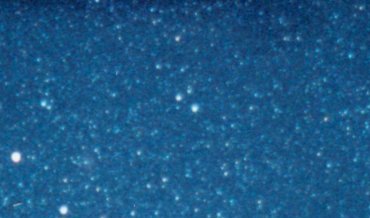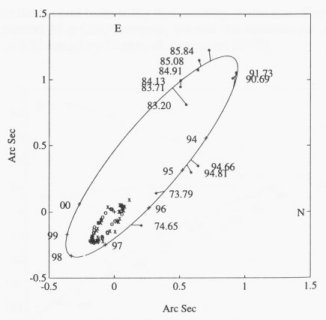
 |
The two Marfaks shine in the center of the picture, Marfak-East (Theta Cas, the brighter) to the right, Marfak-West to the left, both surrounded by the glory of Cassiopeia's Milky Way. North is roughly down. The bright stars at lower left are Shedar (Alpha Cas, the brighter) and Achird (Eta Cas). Up and to the right of them (in a rough equilateral triangle) is the faint glow of the diffuse nebula NGC 281. |
 |
The two stars of Mu Cassiopeiae orbit each other on elliptical paths every 22 years. The small inner orbit is that of the bright primary star about the center of mass of the system, while the outer orbit is that of the faint secondary star focussed on the primary star. The numbers are years of observation; the stars were closest in 1998. (From an article in the Astrophysical Journal by J. Drummond, J. Christou, and R. Fugate.) |